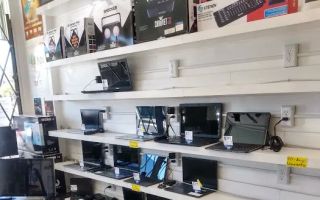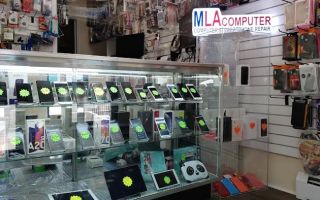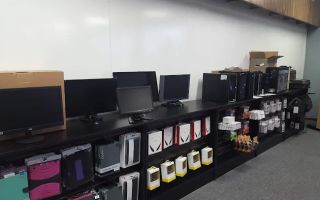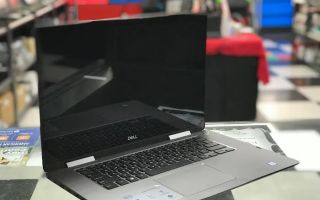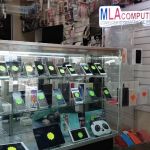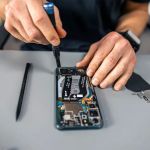How to Format a USB Drive to Create a Bootable Disk: Step-by-Step Guide
- 1. Why You Need a Bootable USB Drive
- 2. Steps to Format Your USB Drive for Booting
- 3. Choosing the Right Tool for the Job
- 4. Troubleshooting Bootable USB Issues
- 5. Best Tools for Creating a Bootable USB
- 6. Why Ninja Stik is a Great Option
1. Why You Need a Bootable USB Drive
Creating a bootable USB drive is an essential skill for anyone who regularly works with computers. A bootable USB allows you to install operating systems, run recovery tools, or even perform diagnostics when your computer isn’t working properly. Whether you're upgrading your system, repairing your OS, or troubleshooting issues, a bootable USB drive is a must-have tool.
Moreover, bootable USB drives are incredibly convenient. Unlike traditional DVDs or CDs, USB drives are portable, fast, and can hold large files. They also provide a quick way to get your system back up and running without needing to rely on external devices or network connections.
2. Steps to Format Your USB Drive for Booting
Formatting a USB drive to make it bootable might sound complicated, but it’s a straightforward process if you follow the right steps. Here’s how to do it:
- Insert your USB drive: Plug your USB drive into your computer's USB port. Ensure that it’s large enough to hold the OS or files you want to use (at least 8GB is recommended for most operating systems).
- Open Disk Management: On Windows, press the Windows key and type "Disk Management." Open it and locate your USB drive.
- Format the USB drive: Right-click on the USB drive and select "Format." Choose the “FAT32” or “NTFS” file system, depending on the size and the requirements of the operating system you're preparing the drive for.
- Set the partition as active: After formatting, right-click the drive again and choose "Mark Partition as Active." This makes it bootable.
- Transfer boot files: Copy the operating system installation files or bootable image to the USB drive. You can use tools like Rufus or the Windows Media Creation Tool for this.
3. Choosing the Right Tool for the Job
There are several tools available to help you create a bootable USB. Depending on your preferences and the operating system you're using, some tools are better suited to your needs than others. Here are a few reliable options:
- Rufus: One of the most popular and efficient tools, Rufus allows you to easily create bootable USB drives from ISO files. It’s user-friendly and supports both Windows and Linux boot images.
- Windows Media Creation Tool: This official Microsoft tool is great for creating a bootable USB for Windows installations. It’s simple to use and automatically formats your USB drive for the task.
- UNetbootin: If you're using Linux, UNetbootin is an excellent choice. It allows you to create bootable USB drives for a variety of Linux distributions.
4. Troubleshooting Bootable USB Issues
Sometimes, even after following all the necessary steps, your bootable USB may not work as expected. Here are some common issues and how to fix them:
- USB not recognized by BIOS: Ensure that your computer’s BIOS/UEFI settings are set to boot from USB. You may need to change the boot order in BIOS to prioritize the USB drive.
- USB not booting: Check if the USB drive is properly formatted and if the boot files are correctly copied. Recreate the bootable USB with the correct settings if necessary.
- Corrupted USB drive: If the USB drive is corrupted or doesn’t show up, try using a different USB port or reformatting the drive before trying again.
5. Best Tools for Creating a Bootable USB
In addition to the tools mentioned earlier, there are a few more options that can help you create a bootable USB:
- BalenaEtcher: BalenaEtcher is another simple tool for creating bootable USB drives from image files. It’s cross-platform, meaning it works on Windows, macOS, and Linux.
- DiskPart (Windows): For advanced users, DiskPart can be used to manually format and partition your USB drive for booting. It offers more control over the process but requires a basic understanding of command-line operations.
6. Why Ninja Stik is a Great Option
If you’re looking for a simple, reliable tool to help you create bootable USB drives, Ninja Stik offers an excellent solution. Whether you're preparing a USB drive for installing an OS or for system recovery, Ninja Stik provides a quick, straightforward method for creating bootable disks with ease.
Creating a bootable USB drive is a valuable skill for anyone working with computers, and with the right tools and a little preparation, the process can be both quick and easy. By following the steps outlined in this guide, you’ll be able to format your USB drive and make it bootable in no time. Ready to start your project? Click here to learn more and get started with Ninja Stik!


